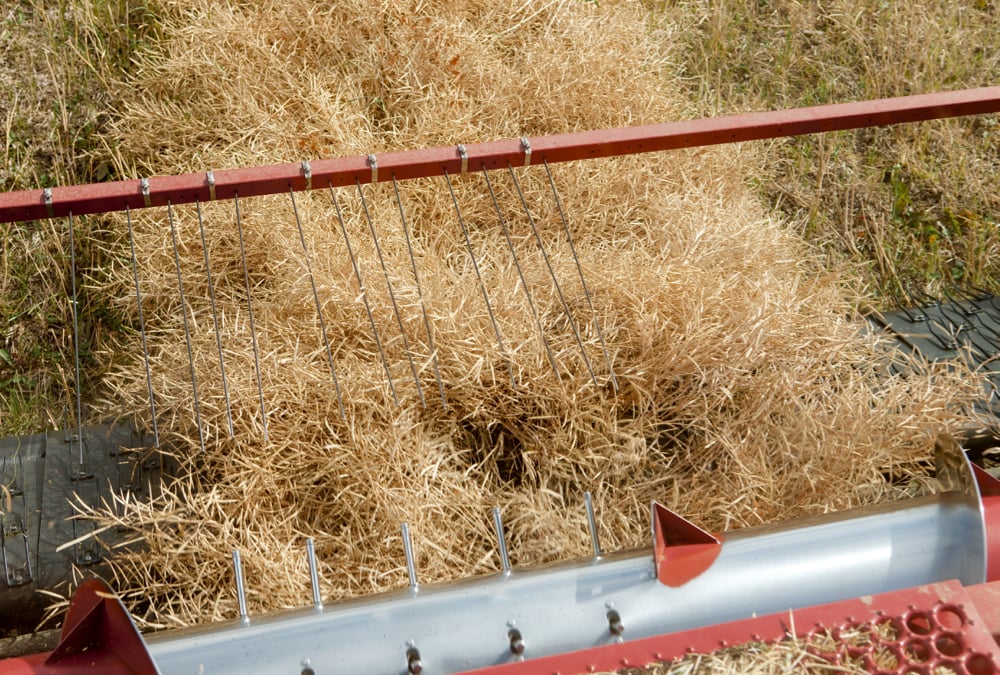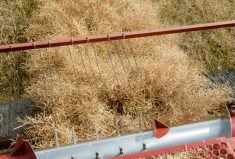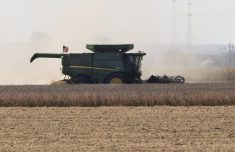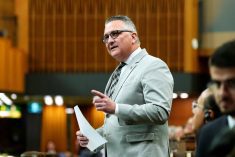Ontario’s Risk Management Program has sent hundreds of millions of dollars to the province’s farmers but its future direction is uncertain, says a new report.
“The programs have paid out to participating producers, but the future direction is no longer as clear,” George Morris Centre executive director Bob Seguin wrote in a recently published analysis of the Ontario program.
The cost-of-production based program is often envied by farm leaders in other provinces, but the overall tone of Seguin’s analysis is skeptical.
Farmer participation rates in the program have been strong, but in part it was because the government gave producers a premium holiday in the first several years of the program, he argued.
Read Also

Alberta harvest wrapping up: report
Harvest operations advanced to 96 per cent complete in Alberta as of Oct. 7, with only a few late-seeded cereal and canola fields remaining, according to the latest provincial crop report.
That now is ending and farmer premiums will be required.
“Participation rates may vary as the net benefits from the program will change,” said Seguin.
Other factors also make the future of the RMP unpredictable.
The provincial Liberal government has promised to keep the program going, but spending will be capped at $100 million annually, forcing reductions in potential payouts.
Meanwhile, the federal government continues to refuse to co-fund the Ontario farm support program with its customary 60 percent contribution, arguing that any cost-of-production based program could lead to trade challenges.
Sequin said that threat remains because international pork producer groups have highlighted Ontario and Quebec cost-based support programs as a concern as Canada heads into Trans-Pacific Partnership trade talks.
“No trade action has been taken to date, but the concerns over potential trade disputes and the RMP remain,” he wrote.
High prices in the grain and oilseed sector also limit the need for the program among farmers in those sectors, at least during this period of high grain prices.
As well, Seguin argued that the long-term impact of a cost-based support program in the livestock, grain and oilseed sectors has yet to be calculated.
The program has triggered payments because market returns vary, while input costs continue to rise. However, the long-term consequences are unclear.
“The effectiveness and long-term benefits of payouts in this manner is still to be determined,” Seguin wrote.
“The impacts on innovation (and) competitiveness over time are not moot issues if the program design inadvertently discourages productivity improvements, efficiencies and search for better markets for the affected commodities.”
Unlike Quebec, Ontario has little history of using cost-based calculations for payments.
“However, the program challenge in developing and ensuring that the cost-of-production calculation does not itself become the target price for the affected industry has not yet been tackled,” Seguin wrote.
He said changes now being negotiated by federal and provincial agriculture ministers for a new five-year policy framework could also affect the program’s future.
With funding cuts planned for the AgriStability program, the Ontario government fears that farmers will look to the provincial RMP to fill in the gap in business risk management funding.
It could affect the Ontario government’s struggle to get rid of its large deficit.
Rural Ontario largely abandoned the governing Liberals in last year’s election, despite the party’s commitment to maintain the $100 million RMP program for farmers. As a result, there are few rural representatives in the Liberal caucus to argue for continuation of the funding despite pressures to reduce spending.
















